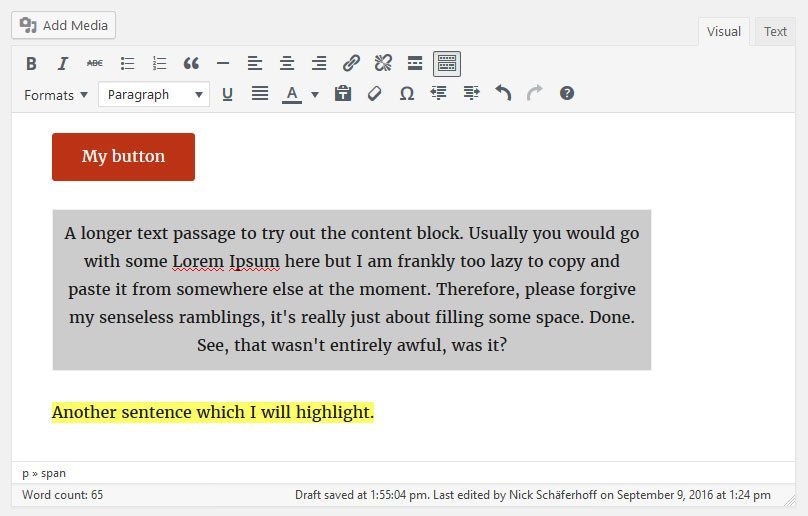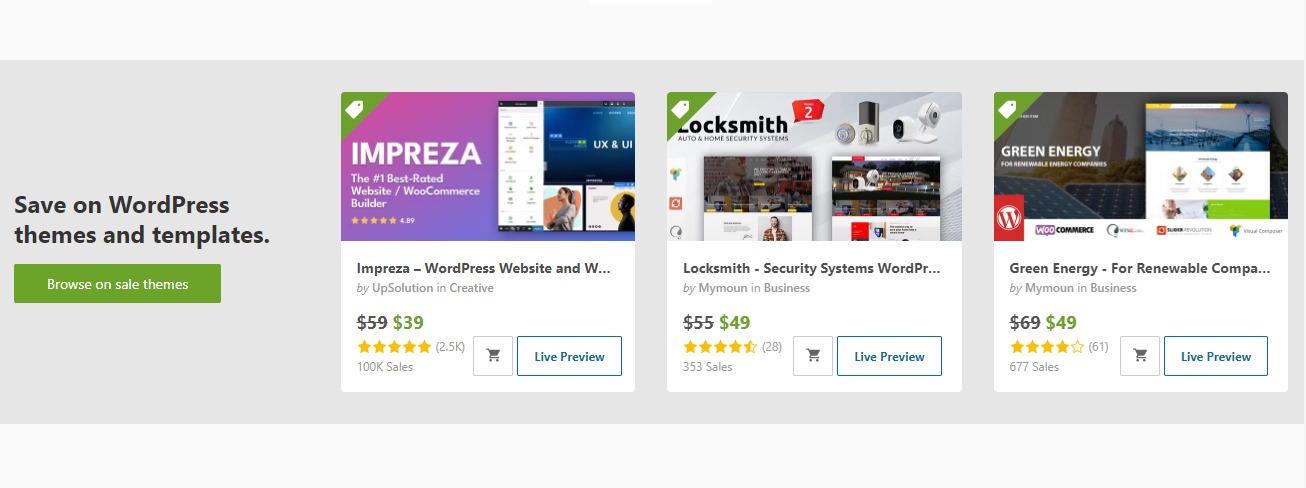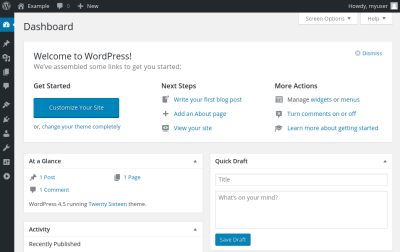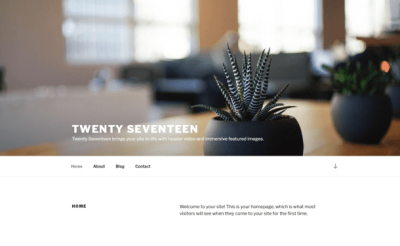If you’re looking to showcase your writing skills, whether you’re a blogger, freelancer, or aspiring author, you want a platform that’s flexible, easy to customize, and visually appealing. WordPress ticks all those boxes. It’s not just for creating blogs or websites—it’s also an excellent tool for displaying your writing samples professionally. Setting up a dedicated site or portfolio on WordPress allows you to organize your work effectively, share it with potential clients or employers, and even grow your online presence. In this post, we’ll explore why WordPress is a fantastic choice for writers wanting to showcase their talents.
Advantages of Using WordPress for Showcasing Your Writing

So, why should you choose WordPress over other platforms for your writing portfolio? Let’s break down the key benefits:
- User-Friendly Interface: You don’t need to be a tech wizard to get started. WordPress has an intuitive dashboard that makes uploading and editing your work straightforward, even if you’re a beginner.
- Customization Options: With thousands of themes and plugins, you can tailor your site to match your style. Want a minimalist look? Or maybe a bold, creative design? There’s something for everyone.
- Content Organization: Easily categorize your writing samples by genre, project type, or date. This helps visitors navigate your work and find exactly what they’re interested in.
- SEO Benefits: WordPress is optimized for search engines. This means your writing samples will be more discoverable online, helping you attract more visitors and potential clients.
- Flexibility for Multimedia: Add images, videos, or audio clips to enhance your samples. This is especially useful if you’re showcasing multimedia projects or interactive content.
- Cost-Effective: You can start with a free WordPress.com plan or opt for a self-hosted WordPress.org setup with affordable hosting options. Either way, it’s budget-friendly compared to building a custom website from scratch.
- Community Support: WordPress has a huge community of developers and users. If you run into issues or want to add new features, help is just a click away.
All these advantages make WordPress not just a blogging platform but a powerful tool to present your writing professionally. Whether you’re just starting out or looking to elevate your portfolio, WordPress can adapt to your needs and grow with you.
3. How to Set Up a WordPress Site for Your Writing Portfolio

Getting your writing portfolio up and running on WordPress might sound a bit intimidating at first, but trust me, it’s pretty straightforward—and totally worth the effort. Whether you’re a seasoned writer or just starting out, setting up your site properly can make a huge difference in how potential clients or employers perceive your work.
First things first, you’ll want to choose a good domain name and hosting provider. Your domain should be simple, memorable, and ideally related to your name or niche. Hosting providers like Bluehost, SiteGround, or WP Engine are popular options that offer one-click WordPress installation, making setup super easy.
Once you have your hosting and domain ready, install WordPress. Most hosts provide a quick install button—just follow the prompts, and you’ll have a blank WordPress site in no time. After installation, log in to your dashboard using the credentials provided by your host.
Next, choose a theme that suits your style and professional goals. There are plenty of free themes designed specifically for portfolios, like Astra, OceanWP, or Neve. These themes are customizable and mobile-friendly, so your site looks great on any device.
Customize your site by heading to the Appearance > Customize section. Here, you can add your logo, change colors, and set your homepage layout. Consider creating a dedicated homepage that introduces who you are, what type of writing you do, and links to your best samples.
Now, it’s time to create the essential pages:
- Home: A welcoming page with your bio and highlights.
- Portfolio: Showcase your best writing samples here, organized by category if needed.
- About: Share your story, your background, and what motivates your writing.
- Contact: Make it easy for visitors to reach out—include a contact form or your email address.
For displaying your writing samples, consider using the built-in block editor (Gutenberg) to create attractive, easy-to-navigate pages. You can add images, quotes, or links to your published articles. To make your portfolio stand out, include brief descriptions or context for each piece.
Finally, install essential plugins to enhance your site’s functionality—like Yoast SEO for search optimization, Contact Form 7 for contact forms, and a caching plugin for speed. With a little time and effort, you’ll have a professional-looking, functional writing portfolio that truly represents your skills and style.
4. Tips for Creating Engaging and Professional Writing Samples on WordPress

Now that your site is set up, let’s talk about how to craft writing samples that grab attention, showcase your talents, and make a lasting impression. The goal is to strike a balance between professionalism and personality—so your work feels authentic and engaging.
First, always choose your best work. Quality over quantity is key here. Pick samples that demonstrate your versatility, whether it’s blog posts, articles, copywriting, or creative writing. Make sure each piece is polished—no typos or grammatical errors—because your samples are a reflection of your skills.
On WordPress, formatting is your friend. Use headings, bullet points, and short paragraphs to make your samples easy to scan. Incorporate quotes or pull-out sections to highlight key points. Remember, many visitors will scan your samples quickly, so make the most important parts stand out.
Adding context helps your audience understand your work better. Briefly introduce each sample: what was the goal, who was the client or audience, and any results or feedback. This storytelling approach makes your samples more compelling.
Another tip is to include visuals where appropriate. Screenshots of published articles, infographics, or images related to your writing can make your samples more engaging. WordPress makes it easy to add media blocks—just upload your visuals and align them with your text.
Consider creating categories or tags for your samples, like “Blog Posts,” “Technical Writing,” or “Creative Fiction.” This organization helps visitors find what’s relevant to their needs quickly and shows that you’re versatile.
Don’t forget to optimize your samples for SEO. Use descriptive titles, relevant keywords, and alt text for images. This not only helps your work rank in search engines but also demonstrates your understanding of digital marketing—an attractive bonus for potential clients.
Lastly, keep your portfolio fresh. Regularly update with new work and remove outdated or weaker samples. An active, current portfolio shows that you’re engaged and serious about your craft.
By following these tips, your WordPress writing samples will not only look professional but also feel authentic and engaging—making visitors more likely to reach out and collaborate. Remember, your portfolio is your chance to tell your story through your work, so make it count!
5. Best Plugins and Themes for a Writing Portfolio on WordPress
Building a stunning and functional writing portfolio on WordPress is easier than you might think, especially when you have the right tools at your fingertips. Plugins and themes are the backbone of customizing your site to showcase your writing talents effectively. Let’s dive into some of the best options to help you create a portfolio that stands out.
Themes: Choosing the right theme is crucial because it sets the visual tone and layout of your portfolio. Here are some top themes tailored for writers:
- Oshine: A versatile, creative theme with multiple portfolio layouts, perfect for showcasing diverse writing samples.
- Astra: Lightweight and highly customizable, compatible with popular page builders, making it easy to craft a personalized portfolio.
- Writee: A clean, minimalist theme designed specifically for writers and bloggers, emphasizing your content without distractions.
- Divi: Comes with a drag-and-drop builder, allowing you to design a unique portfolio layout tailored to your style.
Plugins: Plugins can add functionality, improve user experience, and help you manage your portfolio more efficiently. Here are some must-have plugins:
| Plugin | Function | Why It’s Useful |
|---|---|---|
| WP Portfolio | Creates professional portfolio galleries | Easy to organize and display your writing samples attractively |
| Jetpack | Provides security, performance, and content tools | Improves site speed and offers analytics to track visitors |
| Yoast SEO | Optimizes your site for search engines | Helps your portfolio get discovered by potential clients or employers |
| Contact Form 7 | Adds customizable contact forms | Enables easy communication from potential clients or collaborators |
| Smush | Optimizes images for faster loading | Ensures your portfolio loads quickly, even with lots of images or writing samples |
In summary, picking the right theme sets the visual foundation, while plugins add the functionality you need to make your portfolio professional and user-friendly. Don’t be afraid to experiment and customize until your site truly reflects your writing style and brand!
6. Optimizing Your WordPress Writing Portfolio for Search Engines
Once you’ve got a beautiful portfolio up and running, the next step is making sure people can find it. Search Engine Optimization (SEO) might sound intimidating, but it’s really about making your site easy for search engines like Google to understand and rank. Here are some practical tips to optimize your WordPress writing portfolio:
1. Use a SEO Plugin: Installing a plugin like Yoast SEO or All in One SEO Pack can guide you through optimizing each page and post. These tools help you set meta titles, descriptions, and keywords, making it easier for search engines to index your content.
2. Focus on Quality Content: Your writing samples should be well-written, original, and valuable. Search engines prioritize high-quality content, so make sure each sample is polished and showcases your skills effectively.
3. Optimize Your Titles and Headings: Use descriptive, keyword-rich titles for your posts and portfolio sections. For example, instead of “My Writing,” try “Creative Fiction Writing Samples by Jane Doe.” Proper headings (H2, H3) also help search engines understand your content structure.
4. Use Descriptive Alt Text for Images: If you include images or screenshots of your work, add descriptive alt text. This not only improves accessibility but also helps images rank in search results.
5. Mobile-Friendly Design: Ensure your theme is responsive so your site looks great on all devices. Google favors mobile-friendly sites, which can boost your rankings.
6. Speed Up Your Site: Use caching plugins like W3 Total Cache or WP Rocket to improve loading times. Faster sites provide a better user experience and are favored by search engines.
7. Build Backlinks: Share your portfolio on social media, writing communities, and forums. Quality backlinks signal to search engines that your site is reputable and worth ranking higher.
Remember, SEO isn’t a one-time task; it’s an ongoing process. Regularly updating your portfolio with new samples, maintaining your site’s health, and staying informed about SEO best practices will help you attract more visitors and potential clients. With a bit of effort, your WordPress writing portfolio can become a powerful tool for showcasing your talents and growing your writing career.
7. Showcasing Different Types of Writing Samples Effectively
When it comes to creating a compelling writing portfolio on WordPress, one of the key things to remember is that your samples need to showcase your versatility. Potential clients or employers want to see that you can handle different styles, formats, and topics. So, how do you present these variations effectively?
First off, organize your samples into clear categories or tags. For example, you might have sections for:
- Blog Posts
- Product Descriptions
- Technical Writing
- Copywriting
- Creative Writing
Using categories not only helps visitors find what they’re interested in quickly but also demonstrates your range at a glance. On WordPress, you can easily set up categories for your posts or pages, making navigation smooth and intuitive.
Another effective method is to create a dedicated page for each type of writing. For instance, have a “Blog Writing Samples” page with links or embedded samples, then a “Product Descriptions” page, and so on. Embedding samples directly into your site—not just linking to external PDFs—gives visitors immediate access and shows off your work professionally.
It’s also helpful to include brief descriptions or context for each sample. Mention what the project was, your role, and any results or feedback if applicable. This adds a storytelling element that can engage visitors and give them a clearer understanding of your skills.
Using multimedia can make your samples stand out. Consider adding images, videos, or even audio clips if relevant. For example, if you’ve done podcast scripts or voice-over work, embedding those files can really showcase your talent in a dynamic way.
Finally, don’t forget to update your portfolio regularly. Remove outdated or less impressive samples and add fresh work to keep your portfolio current and engaging. Remember, quality over quantity is key—only feature your best work in each category to leave a strong impression.
8. Maintaining and Updating Your WordPress Writing Portfolio
Building your writing portfolio on WordPress is just the beginning. The real magic happens when you keep it fresh, relevant, and up-to-date. Regular maintenance not only showcases your evolving skills but also signals professionalism and dedication to potential clients or employers.
Start by setting a schedule for reviewing your portfolio. For example, plan to update it every three to six months. This helps you stay on top of your latest work and ensures outdated samples don’t linger.
When updating, consider these tips:
- Remove weaker samples: If a piece no longer represents your best work or is outdated, replace it with newer, stronger samples.
- Add recent projects: Showcase your latest work to demonstrate ongoing activity and growth.
- Refresh your site design: A clean, modern look can keep your portfolio visually appealing. WordPress themes are easy to update or customize.
- Optimize for SEO: Use relevant keywords, descriptive alt text, and proper headings to help your portfolio rank better in search engines.
- Gather feedback: Ask colleagues or mentors to review your portfolio periodically for suggestions on improvement.
Another important aspect is to monitor your site’s performance. Use tools like Google Analytics to see which samples attract the most visitors and engagement. This data can guide you on what types of samples resonate most with your audience.
Don’t forget to keep your contact information and bio updated as well. As you gain new skills or certifications, add those to your profile. This ongoing update process ensures your portfolio remains a true reflection of your current capabilities.
Finally, back up your WordPress site regularly. Using plugins or hosting services that offer automatic backups can save you a headache if anything ever goes wrong. Keeping your site secure and up-to-date with the latest WordPress version and plugins is equally crucial for maintaining a professional online presence.
Conclusion: Why WordPress Is the Ideal Platform for Your Writing Samples
Choosing the right platform to showcase your writing samples is crucial to making a strong impression on potential clients or employers. WordPress stands out as the perfect choice due to its flexibility, ease of use, and powerful features. With thousands of customizable themes and plugins, you can create a professional-looking portfolio that highlights your unique style and expertise. Additionally, WordPress’s SEO-friendly architecture ensures your work is discoverable, increasing your visibility in search results.
Features that make WordPress particularly suitable for writing samples include:
- Ease of Content Management: Easily upload, organize, and update your samples without technical hassle.
- Customization Options: Tailor your site’s design to match your personal brand or niche.
- Built-in Blogging Capabilities: Share updates, insights, or new work to keep your portfolio fresh and engaging.
- Integration with Social Media: Connect your work with platforms like LinkedIn, Twitter, or Facebook for wider reach.
- Analytics and Feedback: Track visitor engagement and gather feedback to refine your presentation.
Overall, WordPress offers a robust, scalable, and user-friendly solution to showcase your writing talent effectively. Whether you’re a freelance writer, blogger, or professional author, leveraging WordPress can help you build a compelling online portfolio that attracts opportunities and demonstrates your expertise.


